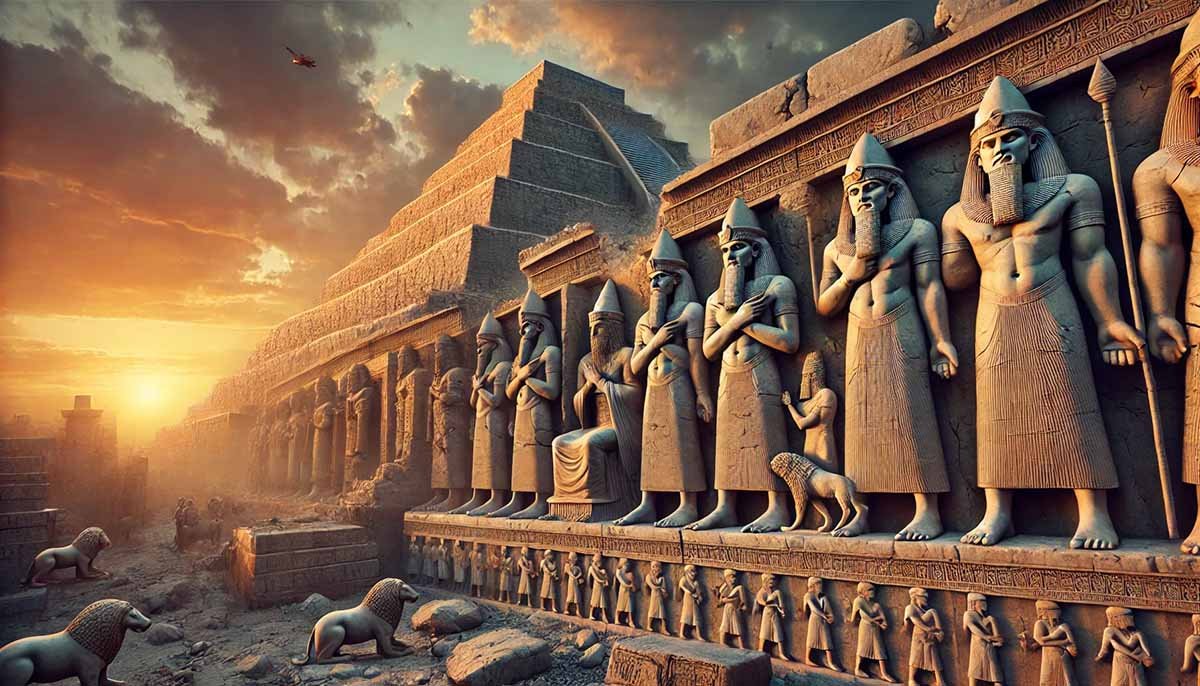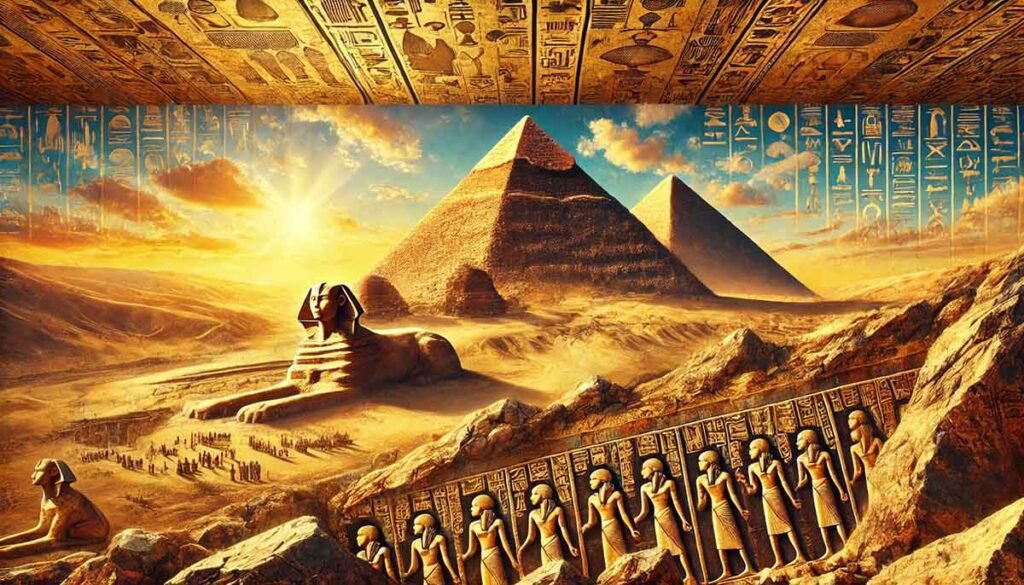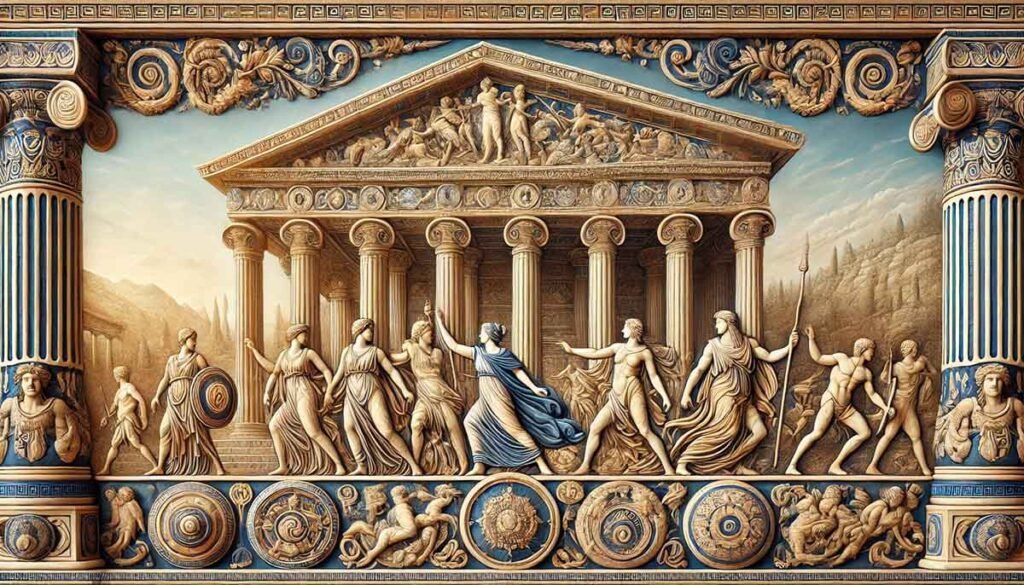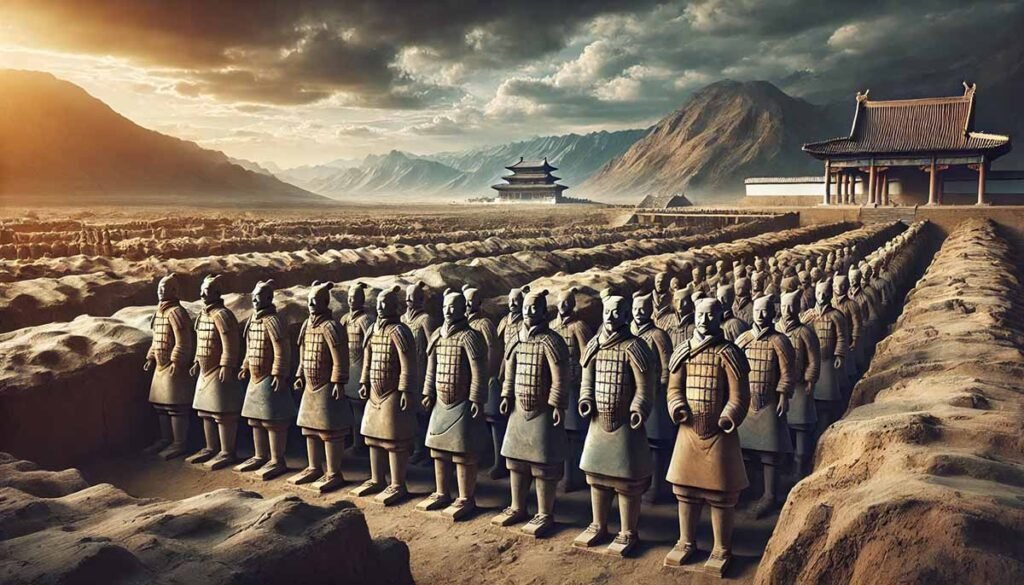Ancient Artz: Discover the Hidden Masterpieces Lost to Time!

Ancient Artz holds a special place in the cultural history of humanity, encompassing the creative expressions of early civilizations that still influence modern-day art. While many masterpieces from ancient times are well-known, several stunning works remain hidden or underappreciated, waiting to be rediscovered by art lovers and history enthusiasts. In this article, we will explore the forgotten artistic achievements of past civilizations and how their artistic expressions continue to inspire contemporary practices.
Throughout history, art has played a crucial role in communicating cultural values, spiritual beliefs, and historical narratives. Ancient civilizations like Egypt, Mesopotamia, and Greece produced magnificent works of art that not only captured the essence of their time but also influenced future generations.
However, many of these artistic creations were lost to time due to natural disasters, wars, and cultural shifts. Yet, their impact can still be felt in modern artistic practices. From intricate pottery to massive sculptures, these hidden gems tell the story of humanity’s creative evolution. In this article, we’ll uncover these hidden masterpieces and explore the rich history of Ancient Artz.
The Origins of Ancient Artz: A Journey Through Early Civilizations
The origins of Ancient Artz stretch back to the prehistoric era when early humans first began using art as a means of expression. The Lascaux cave paintings in France, dating back around 17,000 years, are some of the earliest examples of human creativity. These paintings depicted animals and hunting scenes, likely serving both spiritual and practical purposes.
As civilizations evolved, art became more sophisticated, transitioning from simple carvings to elaborate murals, statues, and architectural wonders. In regions like Mesopotamia and Egypt, art was deeply tied to religion and social status, reflecting the values of the time. Early art was not merely decorative; it was a tool for communication and a reflection of the human spirit.
Key characteristics of early Ancient Artz include:
- Narrative storytelling: Artworks often depicted religious tales, daily life, and significant events.
- Spiritual significance: Many ancient works were created for spiritual or ceremonial purposes.
- Functional artistry: Pottery, tools, and clothing often featured intricate designs while serving practical functions.
Mesopotamian and Egyptian Art: The Foundations of Civilized Creativity
Mesopotamian Art: The Birth of Civilization
Often referred to as the “Cradle of Civilization,” Mesopotamia was home to some of the earliest examples of structured society and artistic expression. Art here was not just for beauty; it also had a functional and political role. Mesopotamian artists used sculptures, stone reliefs, and cylinder seals to honor the gods, glorify kings, and document events.
One of the most famous examples of Mesopotamian art is the Stele of Hammurabi, which depicts one of the earliest known law codes. Standing over seven feet tall, this basalt monument is a testament to the use of art as a medium for both governance and storytelling.
Egyptian Art: Eternity in Stone

Egyptian art is renowned for its focus on the afterlife and religious devotion. The Egyptians believed that their art could help guide the deceased to the afterlife, as seen in the elaborate tomb paintings found in places like the Valley of the Kings.
The Great Sphinx of Giza and the pyramids are iconic examples of ancient Egyptian artistry. These massive stone structures were not only engineering marvels but also deeply symbolic representations of divine power and eternal life. The stylized figures found in Egyptian tombs—characterized by rigid postures and idealized proportions—became a hallmark of the civilization’s unique style.
Hidden Masterpieces of Greek and Roman Art: Beyond the Classics

Greek Art: More Than Just Perfection
When we think of Greek art, famous sculptures like the Venus de Milo often come to mind. However, Greek artists also excelled in smaller, more intricate works that have often been overlooked. Greek pottery, for instance, played a crucial role in documenting everyday life. These beautifully designed vases depicted mythological scenes and daily activities, such as athletic competitions and religious ceremonies.
Many of these works remain hidden in private collections or lesser-known museums, waiting to be appreciated for their delicate craftsmanship and historical value.
Roman Art: Realism and Everyday Life
Roman art drew heavily from Greek traditions, but with a unique focus on realism. While grand monuments like the Colosseum and Pantheon are well known, the mosaics and frescoes found in Roman villas are lesser-known but equally fascinating. These artworks often depicted scenes from daily life, such as banquets, theatrical performances, and hunting expeditions.
Some of the most intricate mosaics were created using thousands of tiny glass and stone pieces, forming stunningly detailed images. Unfortunately, many of these works remain buried under layers of history, yet to be fully uncovered.
Mesoamerican and Asian Contributions: Discovering the Lesser-Known Masterpieces
Mesoamerican Art: A Spiritual Connection
The Mayan and Aztec civilizations created highly symbolic works of art that reflected their deep spiritual connection to the cosmos. The Mayan murals, often found in temples, depicted gods, celestial events, and royal ceremonies. Similarly, the Olmec colossal heads—massive stone sculptures—are some of the most enigmatic pieces of Mesoamerican art, believed to represent rulers or deities.
Asian Art: Mastery of Craft

In Asia, ancient artists from China and India produced some of the most intricate artworks ever seen. The Terracotta Army of China, buried with Emperor Qin Shi Huang, is an awe-inspiring feat of artistry and engineering. Each warrior is unique, showcasing the incredible skill of ancient Chinese artisans.
In India, the murals of the Ajanta Caves are among the finest examples of early Buddhist art, offering a glimpse into ancient spirituality and artistic sophistication.
Lost Techniques and Materials in Ancient Artz: The Craftsmanship Behind the Masterpieces
One of the most fascinating aspects of Ancient Artz is the variety of materials and techniques used by ancient artisans. Stone, clay, bronze, and gold were commonly used, allowing artists to experiment with different forms and textures. However, many of the techniques used to create these masterpieces have been lost over time.
For example:
- Weaving and textiles: In ancient Egypt, linen was used not only for clothing but also for mummification. Many of these intricate fabrics have disintegrated, leaving only faint traces behind.
- Metalworking: Ancient cultures mastered the art of working with metals like bronze and gold. These materials were often used to create both functional items, such as tools, and decorative objects like jewelry.
As these techniques evolved or disappeared over time, much of the ancient world’s artistry became hidden or lost, with only fragments surviving.
Symbolism and Spirituality in Ancient Artz: Hidden Meanings Behind the Masterpieces
Art in ancient times was often steeped in symbolism and spirituality. For many civilizations, art was a way to communicate with the gods or to represent their cultural values.
For instance:
- The ankh in Egyptian art symbolized life and eternal existence.
- In Greek art, the laurel wreath represented victory and honor.
- Mesopotamian art featured depictions of the tree of life, a powerful symbol of growth and divine protection.
These symbols were not merely decorative but were imbued with deep cultural and religious significance, shaping the way people viewed their world and their place within it.
The Modern Influence of Ancient Artz: Echoes in Contemporary Art
Modern art continues to be influenced by Ancient Artz. Greek and Roman classical principles of harmony and proportion laid the foundation for much of Western art. Movements like Surrealism and Modernism have drawn inspiration from ancient motifs, creating abstract and symbolic representations similar to the ancient art of Mesopotamia and Egypt.
In architecture, features like columns, arches, and domes reflect the influence of ancient designs. Modern artists continue to look to the past, reinterpreting ancient themes and techniques in contemporary ways.
Conclusion: Rediscovering Ancient Artz and Its Lasting Legacy
The hidden masterpieces of Ancient Artz offer a window into the creative and spiritual lives of ancient peoples. From the grand pyramids of Egypt to the intricate pottery of Greece, these works reflect the diversity and richness of human expression. Although many pieces have been lost or hidden, their legacy endures, inspiring artists, historians, and art lovers alike.
As we continue to uncover and appreciate these ancient creations, we rediscover the timeless beauty and ingenuity that still resonates in our modern world.
Frequently Asked Questions (FAQ)
1. What is Ancient Artz and why is it important?
Ancient Artz refers to the artistic creations of early civilizations, spanning from prehistoric times to the early medieval period. This includes everything from cave paintings and pottery to grand architectural structures like the pyramids and ziggurats. These works of art are significant because they reflect the cultural values, religious beliefs, and technological advancements of ancient societies. By studying Ancient Artz, we gain insight into the daily lives and spiritual practices of early humans, which continues to influence modern art and culture.
2. Which civilizations contributed the most to Ancient Artz?
Some of the most influential civilizations that contributed to Ancient Artz include:
- Mesopotamia: Known for its sculptures, reliefs, and monumental architecture like ziggurats.
- Egypt: Famous for its tomb paintings, pyramids, and hieroglyphic carvings.
- Greece and Rome: Renowned for their sculptures, pottery, and mosaics that laid the foundation for classical art.
- China and India: Created masterpieces like the Terracotta Army and intricate temple carvings.
- Mesoamerica: The Maya, Aztec, and Olmec civilizations produced murals, colossal stone heads, and ceremonial art.
Each of these civilizations contributed unique styles and techniques that enriched the broader tapestry of ancient art.
3. What materials did ancient artists use in their work?
Ancient artists used a wide variety of materials based on the resources available in their environment. Common materials included:
- Stone: Used for sculptures, buildings, and tombs (e.g., pyramids, statues).
- Clay: Molded into pottery and figurines, often decorated with symbolic designs.
- Metals: Bronze, gold, and silver were used to craft jewelry, weapons, and ceremonial items.
- Textiles: Fabrics like linen and silk were woven for clothing, tapestries, and burial practices.
- Natural pigments: Used to create cave paintings, frescoes, and other artistic designs on various surfaces.
These materials helped create both functional and decorative art that has endured the test of time.
4. How did religion influence Ancient Artz?
The development of Ancient Artz was significantly influenced by religion. In many ancient cultures, art was created to honor the gods, commemorate religious rituals, or depict mythological narratives. For example:
- Egyptian art was deeply connected to beliefs about the afterlife, with tomb paintings designed to guide souls into the next world.
- Mesopotamian art often depicted gods and kings in divine rituals, legitimizing their authority and power.
- Greek and Roman art frequently depicted mythological gods and goddesses, showcasing their influence on human affairs.
Art served as both a devotional act and a visual representation of religious and cultural values.
5. How does Ancient Artz influence modern art?
The legacy of Ancient Artz continues to influence modern art in profound ways. Classical principles from Greek and Roman art, such as harmony, balance, and proportion, form the basis of Western art education. Movements like Surrealism and Modernism have drawn from ancient themes, using symbolism and mythological motifs in their works.Additionally, architectural designs like columns, domes, and arches seen in ancient structures are still widely used in modern buildings. Many contemporary artists look to ancient cultures for inspiration, reinterpreting traditional techniques and themes to create new, innovative works that bridge the past and present.
If you found our content helpful don’t forget to share it on your social media: Twitter.
For more insightful articles, please visit Bloghart.
